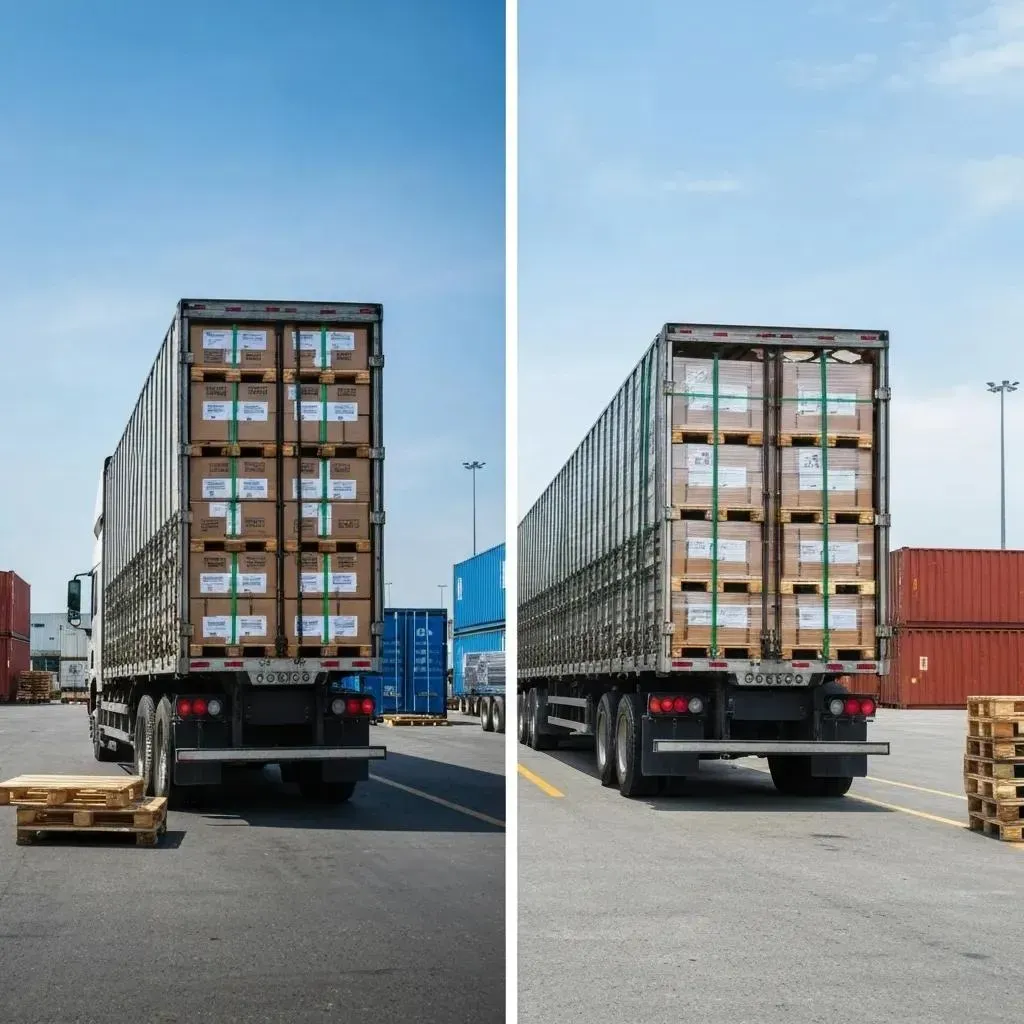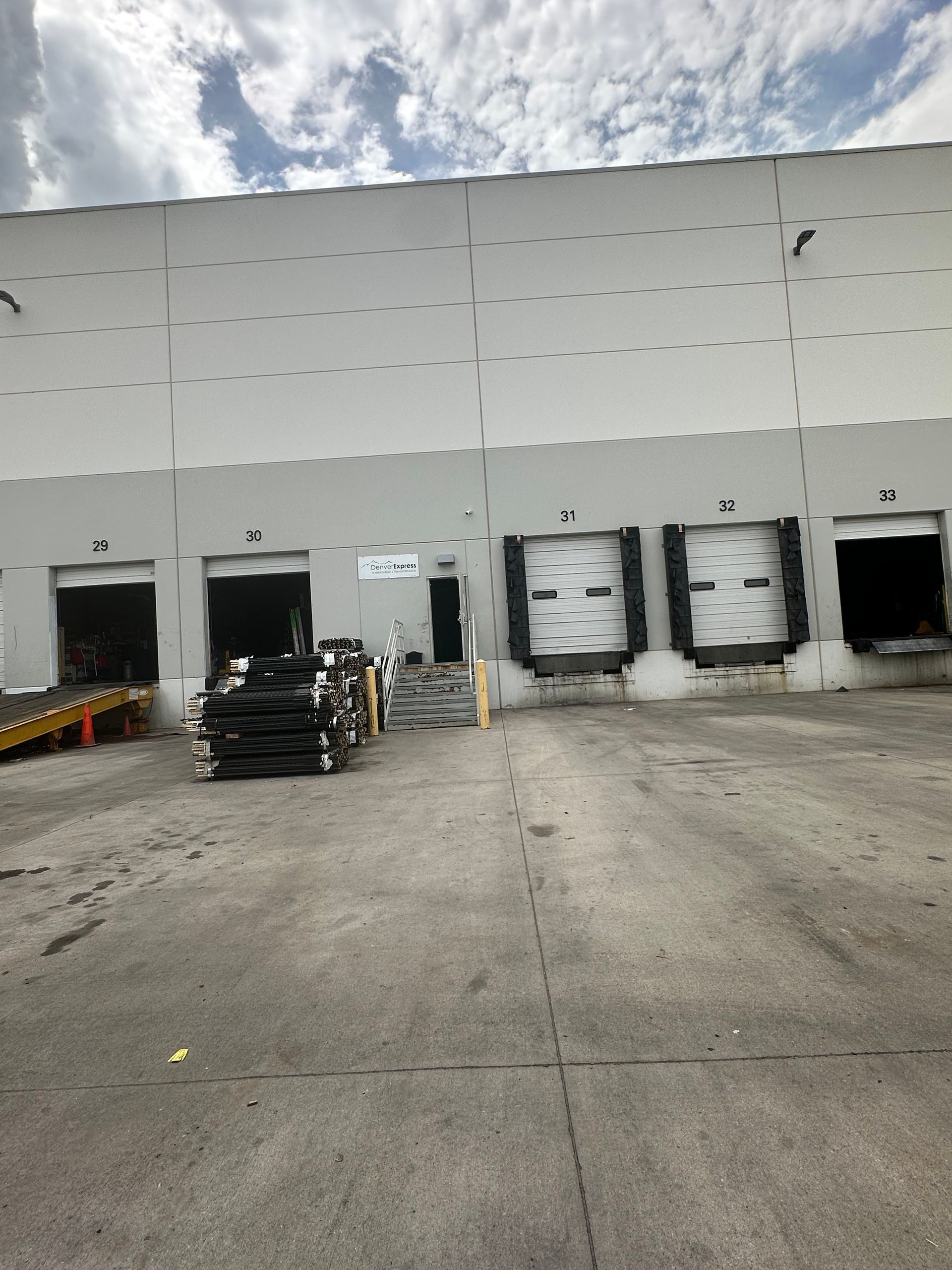Dimensional Weight for Freight | Reduce Shipping Costs Denver
Dimensional Weight (DIM) for Freight: How It’s Calculated and Impacts Shipping Costs

Are you finding your freight bills higher than expected simply because your shipments take up more room than they weigh? Dimensional weight, often called volumetric weight, is a key factor that calculates shipping charges based on a package’s volume, not just its actual weight. This helps carriers ensure fair pricing for bulky, lighter items. In this guide, you’ll learn what dimensional weight means, how to calculate it precisely, why it significantly impacts your shipping expenses, and effective strategies to reduce these costs. We’ll also show you how Denver Express leverages our local warehousing, cross-docking expertise, and deep freight knowledge to optimize shipments across the Colorado Front Range.
What Is Dimensional Weight and Why Is It Important for Freight Shipping?
Dimensional weight is a pricing metric that converts a package’s volume into a theoretical weight. It’s calculated by multiplying a package’s length, width, and height, then dividing by a specific factor set by the carrier. This system ensures carriers can recoup costs associated with the space shipments occupy, especially for bulky items that weigh less than their volume might suggest. Understanding this calculation empowers your business to better anticipate shipping charges, refine your packaging choices, and avoid unexpected freight fees. Since dimensional weight influences billing for LTL, parcel, and full-truckload shipments, mastering its principles is fundamental to achieving cost-effective logistics.
Dimensional Weight Explained
Dimensional weight, also known as DIM weight, is a pricing method used by shipping carriers to determine the cost of a shipment. It takes into account a package's density – the space it occupies relative to its actual weight. Carriers will charge you based on whichever is greater: the actual weight or the dimensional weight.
RefundPros, Dimensional Weight Explained: How Carriers Calculate Shipping Costs, 2025
How Does Dimensional Weight Differ from Actual Weight and Freight Density?
While actual weight measures a package’s mass on a scale, dimensional weight reflects the physical space it occupies. Freight density, on the other hand, combines actual weight and volume to categorize LTL shipments into specific density classes.
- Dimensional weight prioritizes cubic volume over gross mass for billing shipments that are light for their size.
- Actual weight doesn't account for spatial impact, which can lead to undercharging for bulky parcels if used alone.
- Freight density helps determine a shipment's freight class but doesn't directly dictate the billable weight like DIM weight does.
These distinctions highlight how both dimensional weight and density play roles in shipping costs, but they serve separate functions in classification and pricing.
What Is Billable Weight and How Does It Affect Shipping Charges?
Billable weight is the greater of a package’s actual weight or its dimensional weight, which carriers use to calculate your shipping fees. If a lightweight but large package has a higher dimensional weight, the carrier will charge you based on that DIM weight to account for the space it uses. Ensuring your billable weight accurately reflects your true shipping costs allows your business to compare carrier rates effectively and negotiate more favorable freight contracts.
Why Do Carriers Use Dimensional Weight Pricing?
Carriers implement dimensional weight pricing to align their revenue with the actual physical space shipments occupy within their trucks or aircraft. This approach discourages excessive packaging and encourages more efficient use of space, leading to more predictable freight yields. By charging based on the space a shipment takes up rather than just its mass, carriers can maintain profitability on light but bulky goods while offering transparent billing across various shipment types.
How Do You Calculate Dimensional Weight Accurately?

Calculating dimensional weight with precision is key to avoiding costly billing surprises and making smarter packaging decisions. Accuracy starts with taking correct measurements, using the right divisor, and following proper rounding rules.
What Is the Dimensional Weight Formula and How Is It Applied?
To determine dimensional weight, follow these steps:
- Measure the length, width, and height of your package in inches, using the longest points of each dimension.
- Multiply these three measurements together to get the total cubic inches of the package.
- Divide the total cubic inches by the carrier’s specific dimensional factor (divisor).
- Round the result up to the next whole pound.
Consistently applying this formula ensures your billable weight accurately reflects your package’s volume, not just its scale.
How to Calculate Dimensional Weight
To calculate dimensional weight, multiply the length, width, and height of a package in inches, then divide by the carrier's dimensional factor. The dimensional factor varies by carrier, with common factors being 139 for FedEx/UPS and 166 for USPS.
Fit Small Business, Dimensional Weight Calculator for FedEx, USPS & UPS (+ Tips), 2023
How Does the Dimensional Factor (Divisor) Vary by Carrier and Service Type?
Carriers adjust their dimensional factor (divisor) to balance pricing across different services, including domestic, international, parcel, and LTL. The table below shows common divisors:
| Carrier | Typical Divisor | Service Scope |
|---|---|---|
| FedEx/UPS | 139 | Domestic parcel and express |
| USPS | 666 | Priority Mail and Retail Ground |
| LTL Networks | 194–5000 | Less Than Truckload by density |
How Should You Measure Packages for Dimensional Weight, Including Irregular Shapes?
Accurate measurements are crucial for preventing billing errors:
- Use a sturdy tape measure to find the longest points of the package’s height, width, and length.
- If your package has bulges or protruding contents, measure these separately and add them to the overall dimensions.
- Round each dimension to the nearest half-inch or full inch, depending on the carrier’s specific rules.
- For irregularly shaped packages, measure the smallest rectangular box that can fully contain the item.
Following these guidelines ensures your dimensional calculations align with carrier audits and helps you avoid disputes over surcharges.
Where Can You Use an Online Dimensional Weight Calculator?
Online calculators simplify the process of converting package volume to weight, eliminating the need for manual calculations:
- Get instant results by simply entering your package dimensions and selecting the carrier.
- These tools often include options for both domestic and international divisors.
- You can typically see a clear comparison of actual versus dimensional weight side-by-side.
- Some calculators can even generate printable shipping labels with integrated DIM weight fields.
Utilizing these online tools saves valuable time, boosts accuracy, and supports on-the-spot freight quoting.
How Does Dimensional Weight Impact Freight Shipping Costs?
When a package’s dimensional weight is greater than its actual weight, carriers will invoice you based on that higher volume-based weight, leading to increased shipping expenses for low-density shipments. Recognizing this tipping point allows your business to strategically manage packaging and select appropriate shipping modes to minimize costs.
What Are the Cost Differences Between Dimensional Weight and Actual Weight Billing?
Comparing these two billing methods clearly illustrates potential surcharges:
| Package Profile | Actual Weight | Dimensional Weight | Billing Method | Cost Impact |
|---|---|---|---|---|
| Small dense box | 50 lb | 30 lb | 50 lb actual | Standard rate |
| Bulky lightweight box | 10 lb | 40 lb | 40 lb DIM | Higher fee |
| Medium size moderate | 25 lb | 25 lb | 25 lb standard | Balanced pricing |
Understanding when dimensional weight applies is crucial for preventing unexpected rate increases and guiding improvements in your packaging strategies.
How Does Dimensional Weight Affect LTL, Full Truckload, and Parcel Shipping?
Different freight modes are affected by volume-based charges in distinct ways:
- LTL shipments use density to determine freight class, meaning lower-density loads often result in higher classes and consequently, higher rates.
- Full truckload billing typically relies on actual weight, but very low-density loads might incur space-based fees.
- Parcel carriers commonly default to dimensional weight for lighter packages, making package dimensions a critical factor for e-commerce businesses.
Optimizing your choice of shipping mode based on density and volume can help you avoid escalating fixed costs across all transport types.
What Are Common Carrier Policies on Dimensional Weight for FedEx, UPS, and USPS?
Most parcel carriers adhere to similar guidelines:
- FedEx/UPS apply dimensional weight pricing when a package’s volume-to-weight ratio exceeds a factor of 1:139.
- USPS uses a 1:166 divisor for Priority Mail and Retail Ground services.
- Minimum dimensions and weight thresholds can vary, and oversize fees may apply to packages exceeding 108 inches in combined length and girth.
FedEx and UPS Dimensional Weight Rules
FedEx and UPS utilize dimensional weight pricing for all domestic and international shipments. Dimensional weight is calculated by dividing a package's cubic size by a DIM factor, which is commonly 139 for many accounts. The billable weight is determined by whichever is greater: the actual weight or the dimensional weight.
eFulfillment Service, New FedEx & UPS Dimensional Weight Rules for 2015, 2016, 2017, 2017
Familiarizing yourself with each carrier’s specific terms can help you select the most cost-effective shipping option for your bulky goods.
What Strategies Can Businesses Use to Reduce Dimensional Weight Charges?
Businesses can effectively cut volumetric fees by adopting smarter packaging practices, consolidating shipments, and choosing materials that reduce cube size without compromising product protection.
How Can Packaging Optimization Lower Dimensional Weight Costs?
Packaging Strategies to Reduce DIM Weight
Businesses can lower dimensional weight charges by optimizing their packaging. This includes selecting the right carton size, using effective dunnage, and choosing lightweight materials. These strategies help minimize the space a package occupies, thereby reducing shipping costs.
ShipBuddies, Packaging Hacks to Lower Your Dimensional Weight (DIM Weight), 2025
- Choose boxes that are the right size for your products, ensuring a snug fit with minimal empty space.
- Utilize custom inserts or padding to stabilize items within smaller containers.
- Collapse or deflate any exposed packaging materials to eliminate excess volume.
Implementing these tactics directly reduces dimensional charges and helps ensure your goods remain protected during transit.
What Role Does Shipment Consolidation and Right-Sizing Play in DIM Weight Reduction?
Consolidating multiple items into a single pallet or carton can significantly increase density:
- Combine smaller boxes to fill a larger container, minimizing empty space.
- Optimize pallet configurations to maximize cube utilization.
- Coordinate cross-dock transfers to merge LTL shipments, potentially leading to lower freight class ratings.
By improving freight density, consolidation helps minimize space-based fees and streamlines overall handling processes.
How Can Choosing the Right Packaging Materials Help Manage Dimensional Weight?
Opting for lightweight yet high-strength materials can maintain product protection while reducing overall volume:
- Use inflatable air pillows or foam wraps instead of bulky bubble wrap.
- Consider corrugated cartons with specialized board grades that allow for thinner, yet strong, walls.
- Employ reusable packaging solutions that can be molded to the product's shape, eliminating unnecessary extra space.
Your choice of packaging materials can directly reduce dimensional weight without compromising the integrity of your shipment.
How Does Denver Express Help Optimize Dimensional Weight for Colorado Businesses?
With decades of experience serving the local market, Denver Express combines expert warehousing, efficient cross-docking, and comprehensive LTL and full-truckload services to help Front Range companies reduce their dimensional weight costs.
How Do Denver Express’s Warehousing and Cross-Docking Services Reduce DIM Weight Costs?
Our 23,000 sq ft FDA-approved warehouse and streamlined cross-dock operations are designed to minimize storage time and repackage shipments for optimal cube size. By consolidating orders and reconfiguring packages on-site, we help our clients avoid unnecessary volume fees before their cargo even enters the carrier network.
How Can Denver Express’s LTL and Full Truckload Solutions Improve Freight Efficiency?
Denver Express leverages density-driven class selection for LTL shipments and weight-maximizing load plans for FTL to ensure you pay only for the actual capacity used. Our freight experts are skilled at negotiating carrier contracts that include favorable divisors and volume discounts, passing those savings directly on to local businesses.
What Local Case Studies Demonstrate DIM Weight Savings with Denver Express?
A Colorado-based food distributor successfully reduced dimensional surcharges by 30% after transitioning to right-sized cartons and utilizing cross-dock consolidation at our Denver facility. Additionally, a manufacturer on the Front Range lowered their LTL class rates by over 15% through optimized pallet configurations and shipment bundling, resulting in significant per-pound cost savings.
What Are the Latest Trends and Future Developments in Dimensional Weight and Freight Logistics?
Emerging technologies and a growing focus on sustainability are driving the next wave of dimensional weight management, reshaping how carriers measure, price, and reduce the volumetric impact of shipments.
How Are AI, Automation, and Technology Shaping DIM Weight Management?
Automated dimensioning systems, utilizing laser scanners and computer vision, can now capture package volume in mere seconds, eliminating manual errors. AI-driven analytics are helping predict optimal box sizes and pallet configurations, while integrated Transportation Management Systems (TMS) alert shippers to potential DIM weight surcharges before freight is even tendered.
What Is the Role of Sustainability and Packaging Optimization in Freight Shipping?
Environmentally conscious companies are increasingly adopting lightweight, recyclable packaging solutions that not only reduce cube size but also lower carbon emissions. By aligning dimensional weight strategies with sustainable materials, businesses can decrease fuel consumption and waste, achieving a dual benefit for both their bottom line and the planet.
How Is the Freight Market Outlook Influencing Dimensional Weight Pricing in 2025?
The anticipated recovery in freight demand, coupled with rising spot rates, is expected to intensify carriers’ focus on space utilization. As capacity tightens, we may see dimensional weight thresholds become stricter and divisors adjust upward. This makes early adoption of packaging optimization and proactive carrier negotiations crucial for controlling future shipping costs.
What Are the Most Frequently Asked Questions About Dimensional Weight for Freight?
Shippers often seek clearer explanations regarding calculation methods, the rationale behind carrier pricing, effective cost-saving techniques, the impact on different service modes, and available local support options. Common inquiries include understanding the volume-to-weight formula, finding ways to reduce DIM weight surcharges, comparing LTL versus parcel fees, and leveraging third-party logistics (3PL) partnerships for packaging and consolidation expertise.
- The dimensional weight formula and its practical applications
- Carrier motivations for implementing volumetric pricing
- Strategies for lowering space-based shipping charges
- How dimensional weight affects various freight modes
- How local 3PLs like Denver Express provide tailored DIM weight solutions
These topics represent the core information that shippers need to effectively manage shipping costs and optimize their freight operations.
Denver Express combines deep regional knowledge, advanced packaging guidance, and integrated warehousing solutions to help Colorado Front Range businesses stay ahead of dimensional weight challenges.
By mastering volumetric calculations, selecting efficient packaging materials, and partnering with a logistics expert, companies can transform dimensional weight from a significant cost driver into a valuable opportunity for savings and more sustainable shipping practices.




















